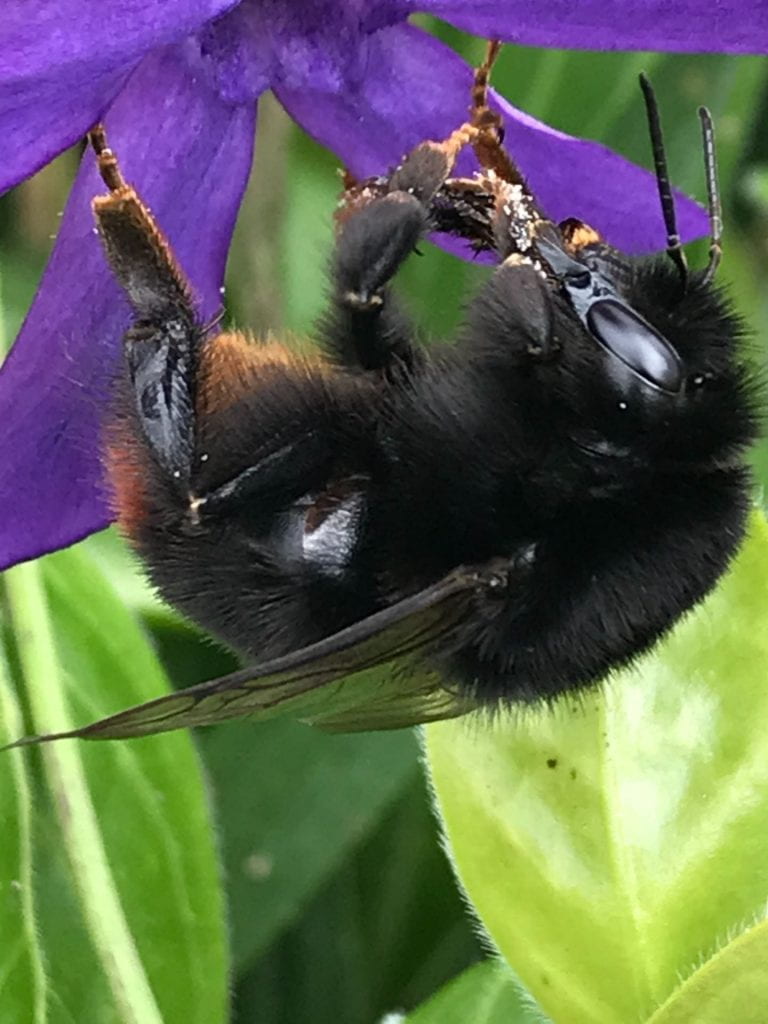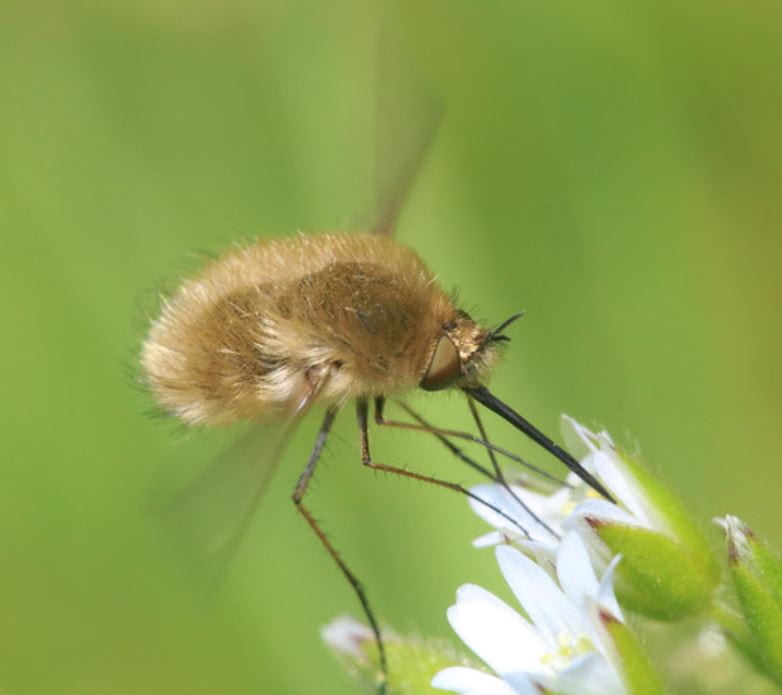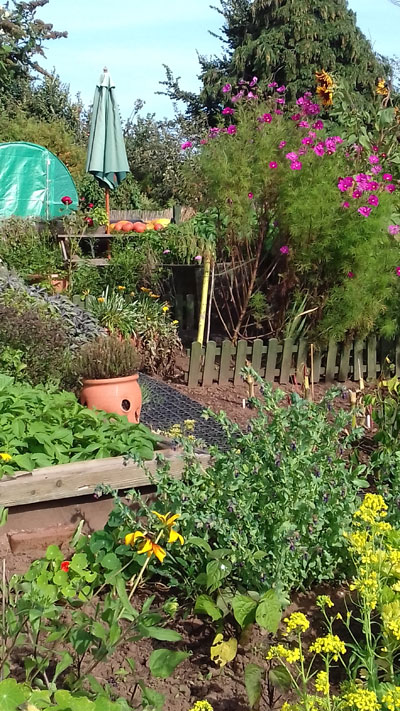
All of the sun that we have had in the last few days has meant that the wildlife has started to emerge in the wildlife garden and because I am not very good at naming insects, I am focusing on trying to identify one bit of wildlife each time I visit. About 10 days ago I saw and managed to photograph this bee; Bombus lapadarius or Red-tailed bumble bee.
The bumble bees that are out at this time of year are probably the queens who live underground in old holes and under stones. They are common throughout the UK and I was fortunate that I spotted her at the start of the year because as she ages, she loses some of the red through sun bleach which makes identification more difficult. She was feeding on the purple flowers of Vinca major which have rather run amok on the plot and have now reached half-way down the garden. I am slowly removing them but will keep large clumps because they have been covered in insects.
The second insect I found on the Vinca major looked like a bee but had long legs a bit like a daddy longlegs and a proboscis that stuck out. It didn't really land on the flowers but hovered level with them. Unfortunately, I wasn't quick enough to get a photo but I looked it up and have identified it as a Westerm Bee-fly (Bombylius canescens). I had no idea there were things that mimicked bees but this is one of them.

Western Bee fly taken by Leon van der Noll
This is exactly what it looked like and is again a female. This bee-fly is not as common as the red-tailed bumble bee but the south-west is one of the areas where it can be found.
I also found what I thought was a toad buried under a geranium.
What is the difference between a toad and a frog?
- Toads have warty and bumpy skin, frogs have smooth skin
- Frogs have log back legs, toads shorter ones and prefer to crawl around
- Frogs are lithe and athletic (!), toads are dumpy and squat
- Toads don't need water as much as frogs and so can be found further away from a pond or other water.
It was definitely a toad and it was some way away from the pond which makes it even more likely to be a toad.
And finally, there were ladybirds. Lots of them this week but mostly on the manure. They are a type of beetle and love to feed on aphids which is why we want them. I can only see 5 spots on these ladybirds but it seems that spots are not always the best identifying feature. They too have a fantastic latin name, Coccinella quinquepunctata Linnaeus.

